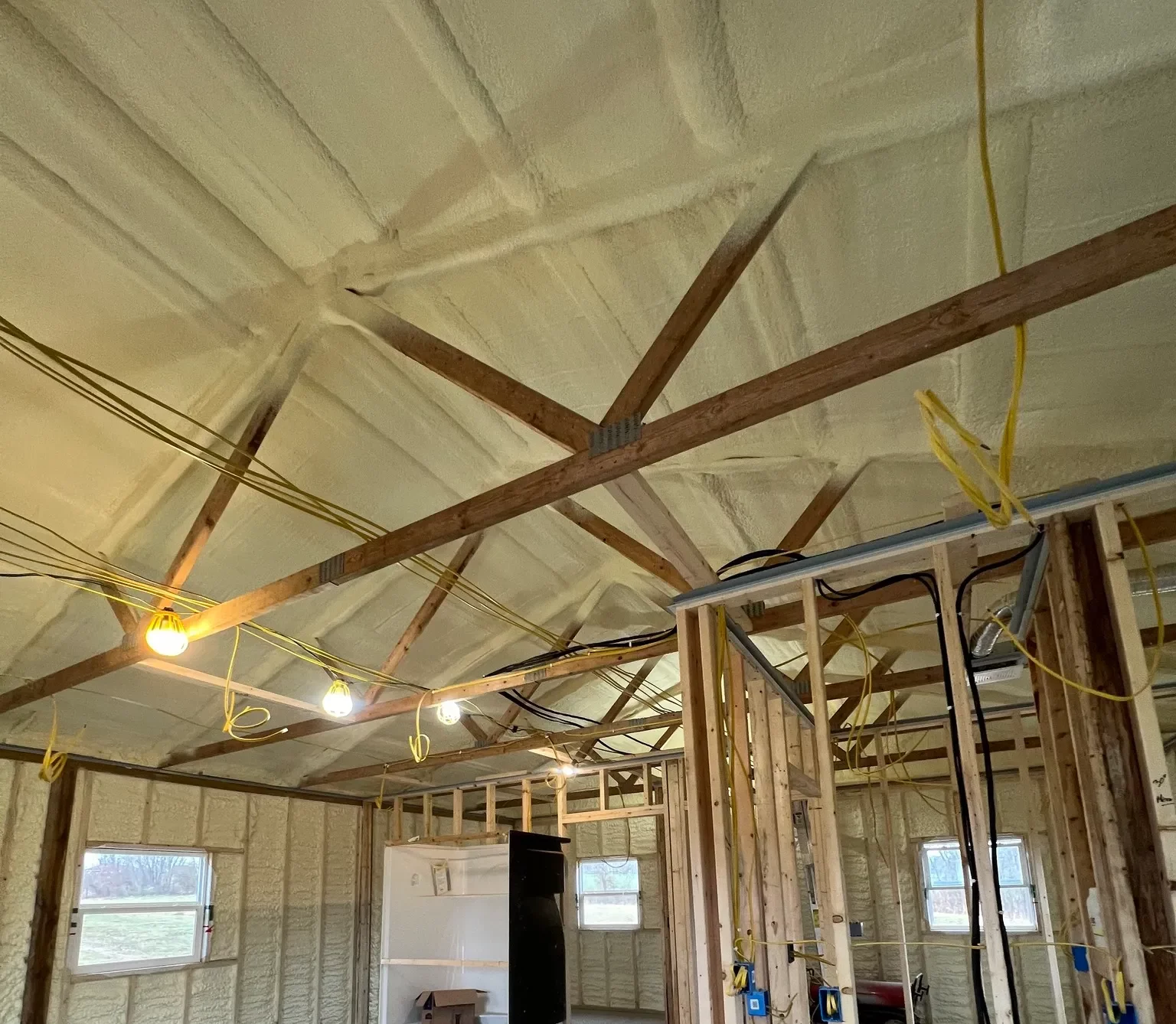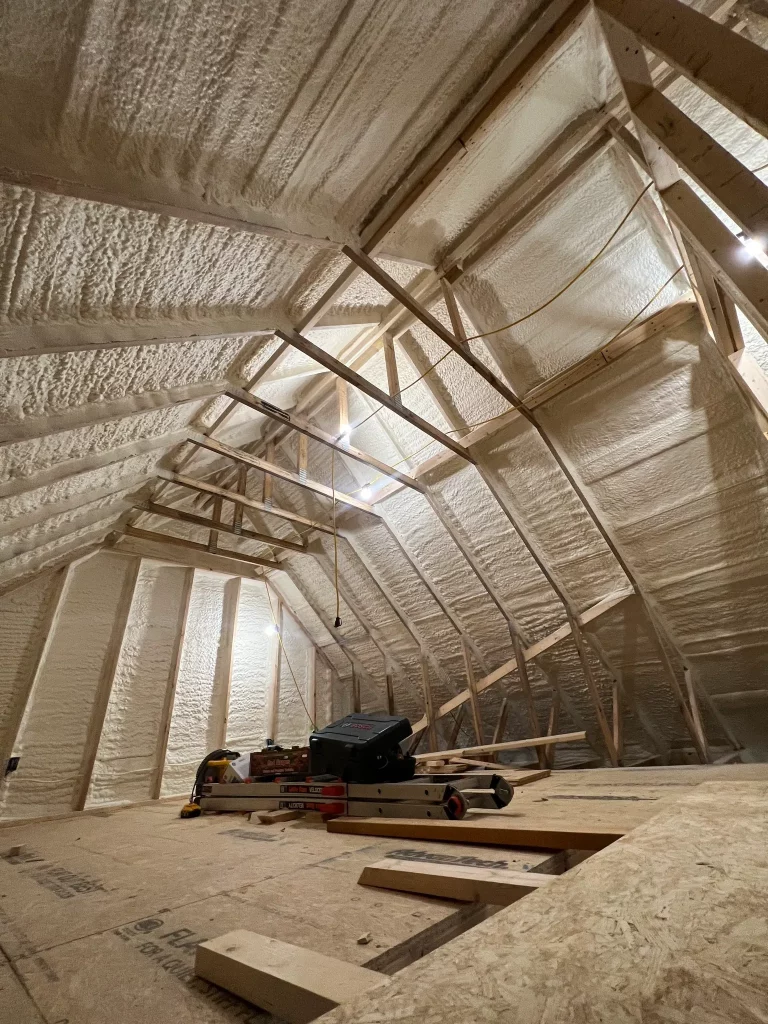
Spray foam insulation delivers the greatest performance gains in areas with high exposure to air leakage, temperature shifts, and moisture ingress. These typically include attics, crawl spaces, basements, and exterior walls. Application in these zones prevents conditioned air from escaping and blocks outdoor air from entering, improving energy efficiency and indoor comfort.
Ohio Valley Spray Foam applies both open-cell and closed-cell foam in key structural zones to reduce thermal bridging and moisture risks. Each space responds differently to insulation based on function, exposure, and material type. The following sections explain where spray foam provides measurable value and how to evaluate options based on real-world building performance.
Attics are among the highest-impact areas for spray foam installation. Roof decks and gable ends experience direct heat gain and loss due to their exposure. Applying closed-cell spray foam under the roof deck creates an unvented, conditioned space, reducing HVAC load by up to 20% (Oak Ridge National Laboratory).
Bonus Tip: Avoid using open-cell foam in humid attics unless proper vapor control is in place.
Crawl spaces and rim joists are common sources of air leakage and moisture problems. Closed-cell foam seals these vulnerable areas, increasing floor comfort and preventing condensation. Uninsulated rim joists can account for up to 30% of heat loss in older homes (Building Science Corporation).
Bonus Tip: Insulate crawl space walls instead of subfloor for better temperature stability.
Basement walls and rim joists are often left uninsulated or poorly insulated, leading to mold risks and heat transfer. Closed-cell foam is preferred for below-grade walls due to its moisture resistance and ability to insulate with minimal thickness.
For new builds or major renovations, exterior walls benefit from spray foam’s air-sealing properties. Open-cell foam is cost-effective for interior wall cavities; closed-cell foam adds structural rigidity and vapor resistance.
| Home Area | Recommended Foam Type | Key Benefits | Common Issues Resolved |
|---|---|---|---|
| Attics | Closed-cell | Thermal seal, moisture barrier | Heat gain/loss, duct inefficiency |
| Crawl Spaces | Closed-cell | Air sealing, moisture resistance | Musty odors, cold floors, mold |
| Rim Joists | Closed-cell | Leak prevention, structural support | Drafts, wood rot |
| Basements | Closed-cell | Moisture protection, thermal break | Wall sweating, cold interior walls |
| Exterior Walls | Open-cell / Closed-cell | Sound reduction, air sealing | Inconsistent wall temps, air infiltration |
| Characteristic | Closed-Cell Spray Foam | Open-Cell Spray Foam |
|---|---|---|
| R-value per inch | ~6.5 | ~3.6 |
| Water resistance | High | Low |
| Air sealing | Excellent | Excellent |
| Vapor barrier | Yes | No |
| Flexibility | Rigid | Soft |
| Ideal use | Exterior, basements, crawl spaces | Interior walls, soundproofing |

Bonus Tip: Combine spray foam with proper ventilation planning to avoid trapped moisture in sealed assemblies.
Start with attics and rim joists. These often provide the highest energy return and comfort improvement.
Not recommended. Remove old insulation to ensure full adhesion and proper sealing.
Yes, it limits outside air entry, reducing pollen and dust infiltration.
When installed correctly, both foam types last 20+ years without degradation.
Spray foam offers targeted benefits for specific parts of the home where air leakage and moisture issues are most severe. Whether sealing rim joists or encapsulating attic spaces, correct application directly improves indoor comfort and energy use. Evaluate access, moisture levels, and structural layout before deciding.
Contact Ohio Valley Spray Foam for guidance on selecting the right insulation type and application area. Email: [email protected] | Phone: (740) 373-3626
Improved insulation often reduces heating and cooling loads. Oversized units may cycle too quickly, causing humidity issues. An HVAC professional should reassess load calculations post-installation.
Open-cell foam absorbs airborne sound, making it useful for interior partitions or shared walls.
Odors, uneven foam thickness, and visible gaps are signs of poor workmanship. Post-install inspection is essential.
Yes. In Ohio’s mixed-humid climate, closed-cell is preferred for below-grade and vented spaces due to its vapor resistance.